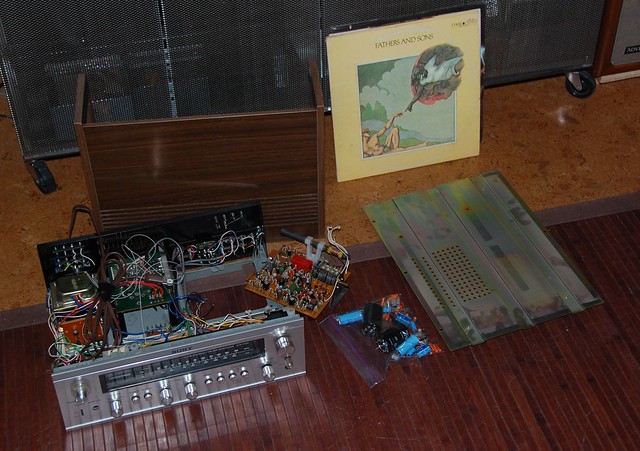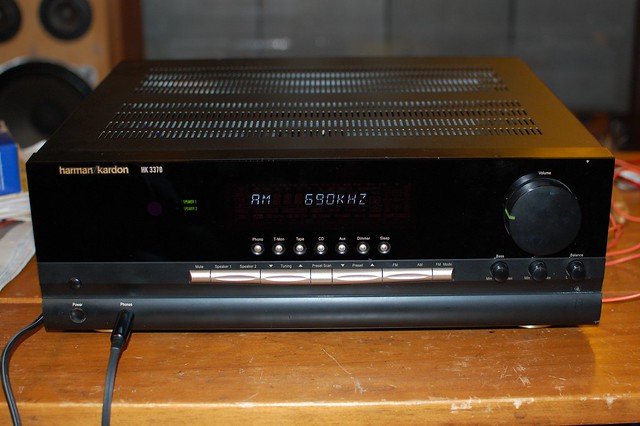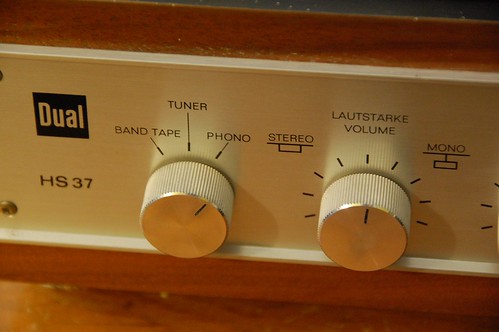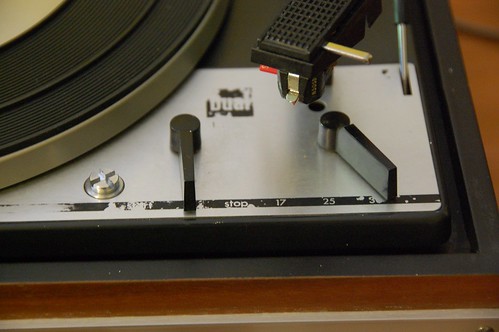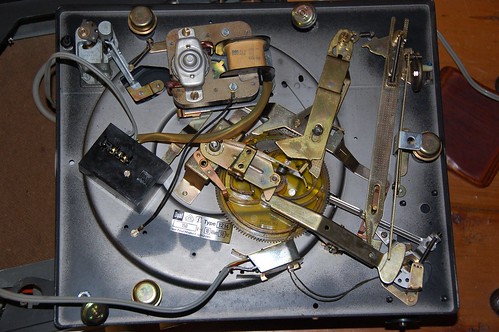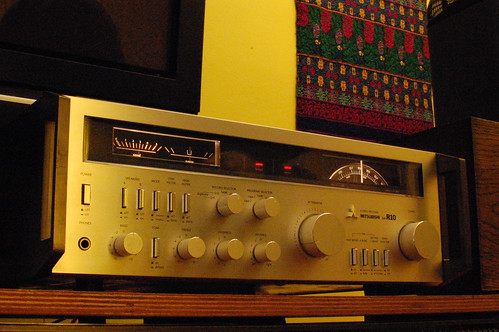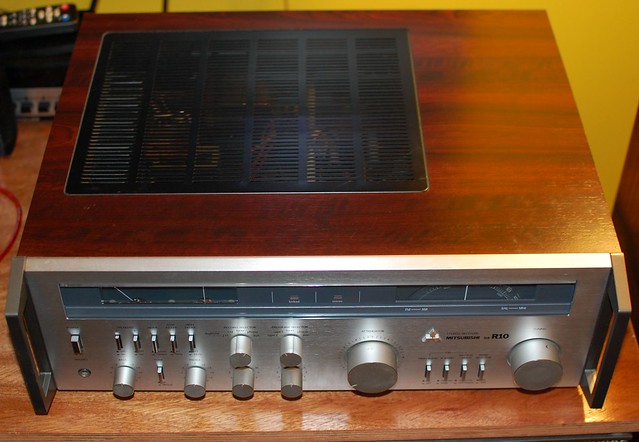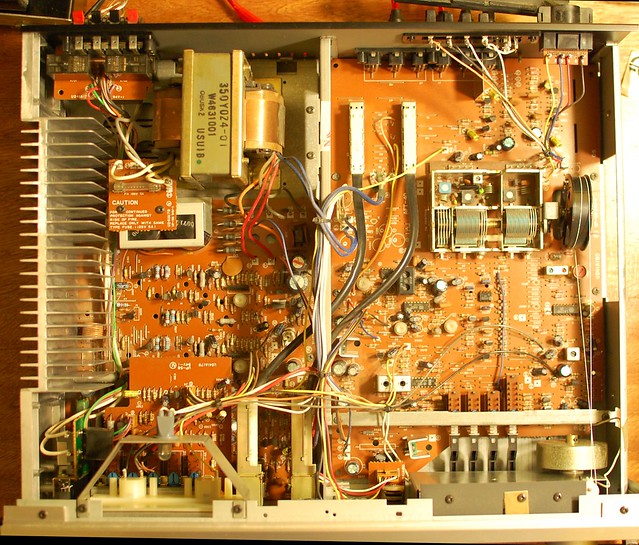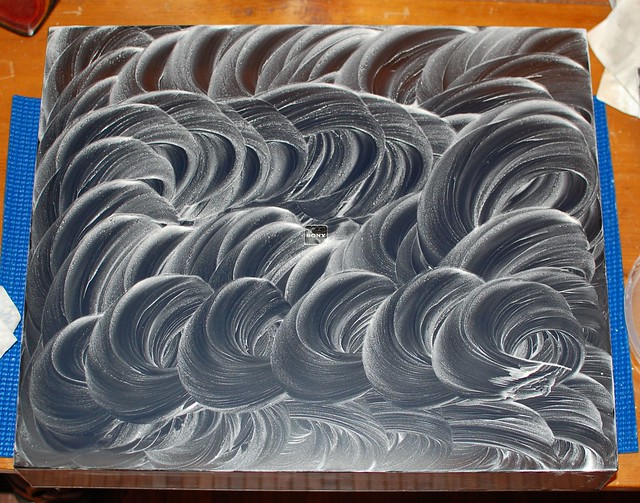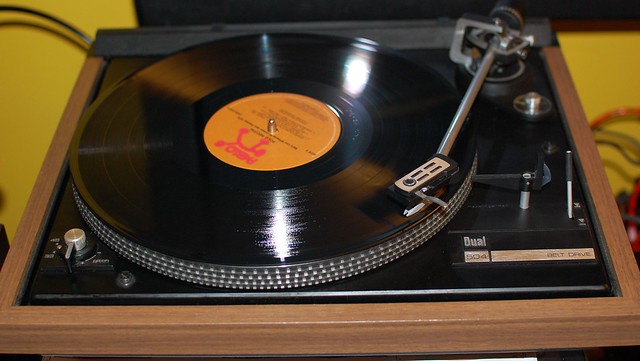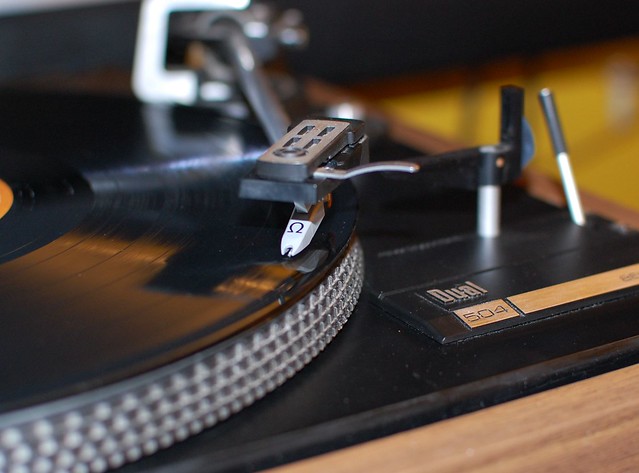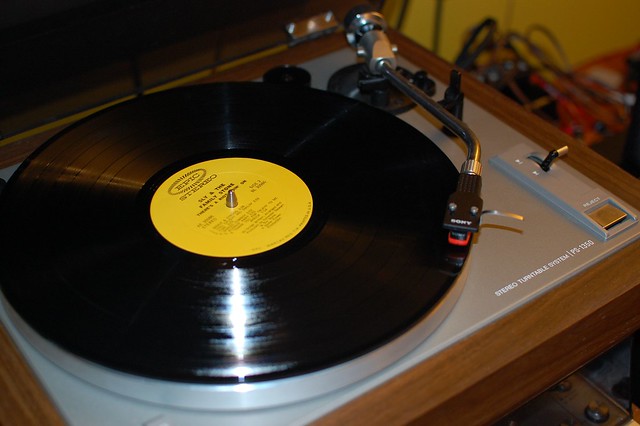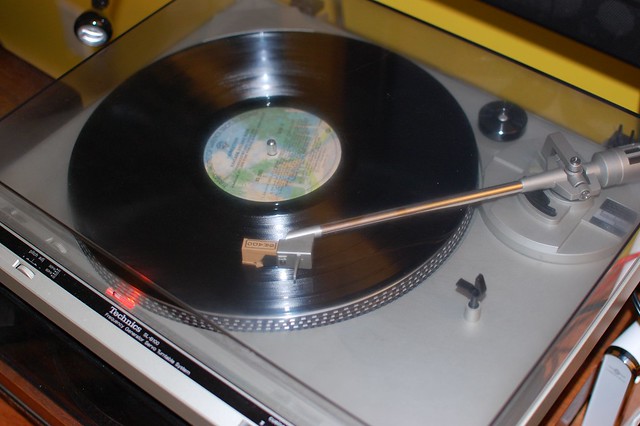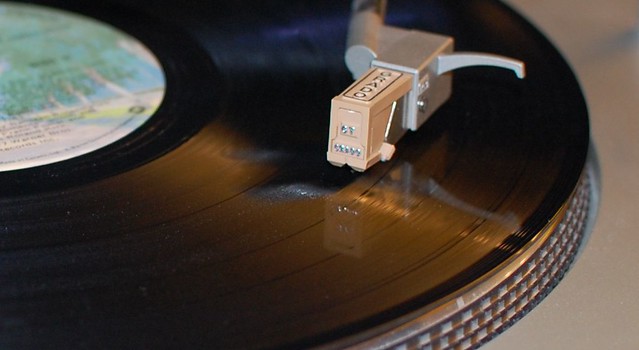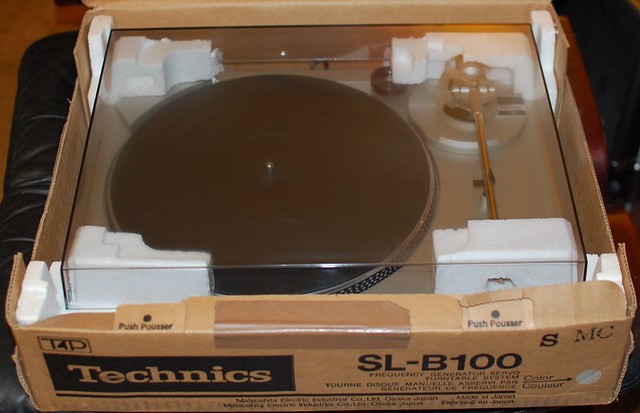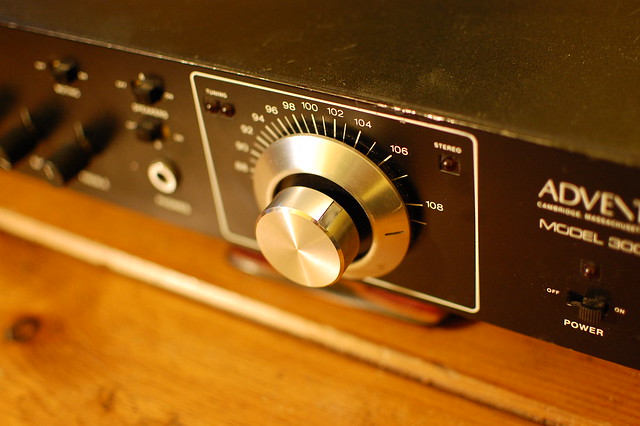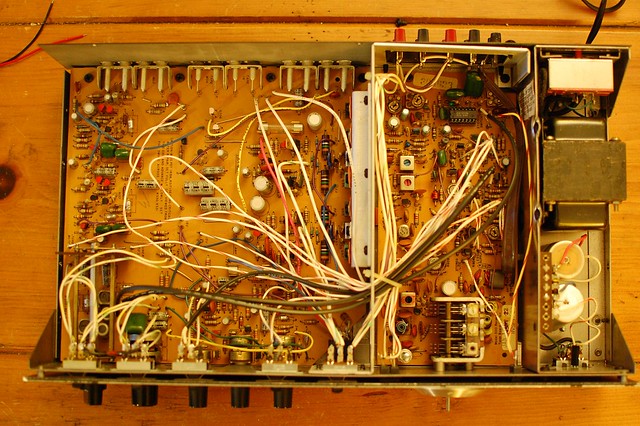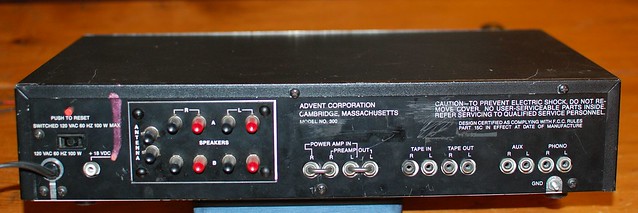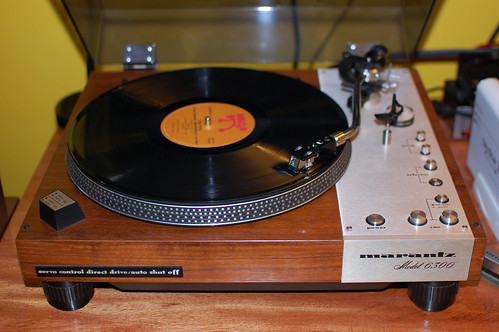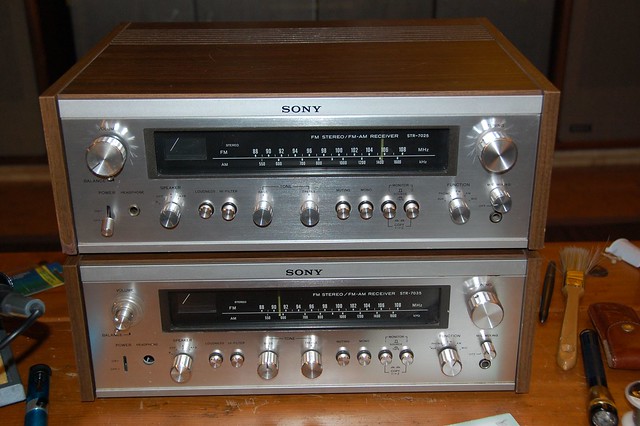
I could try to reinstall all the caps in the 7035, with the old ones or new replacements, and to that end I bought a Service Manual for it. However it is still just wishful thinking that after doing so I would end up with a working receiver.

It was also wishful thinking that prompted me attempting the other scenario, that of moving the tuner board from the 7035 to the 7025. I had no way of knowing if this board would work any better than the other one. Well, tonight I got out my tools and went to it.

The list included:
Soldering iron & solder
Pliers
Screwdrivers
Knife
Notepad and pen (to record wire positions)
Camera (same reason as above)
Martini (for fortitude)
Music in the background
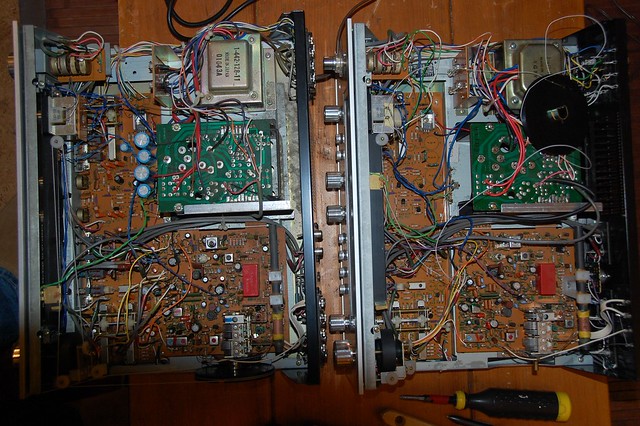
There were over 20 wires connected that I had to take note of, so I took pictures and sketched the layout and marked all the pins with the wire colour coding. I also taped the string from the tuner display onto the large roller that is attached to the tuning capacitor. I have restrung tuners before but it can be fiddly and if you don't have to...
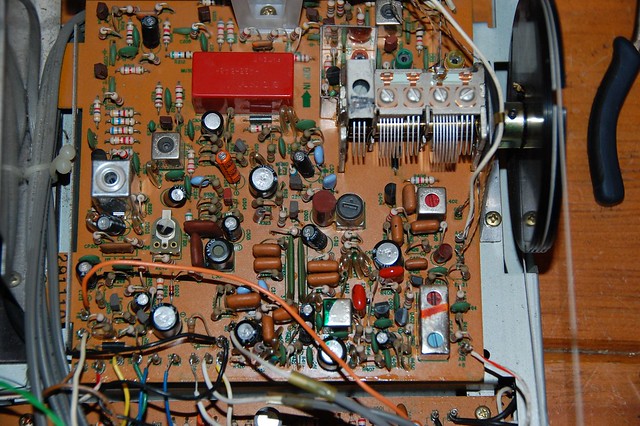
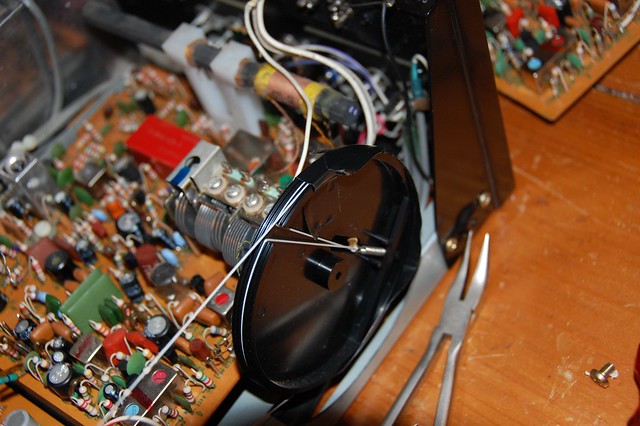
I removed the tuning wheel from the 7035, and started to unsolder the various wires. The majority of the connections were on wire wrap pins so really just had to be unwound, and eventually they were all undone, and a few screws were removed. The board would still not come out until I realized it was still attached by a grounding cable to the chassis underneath. Once that was unsoldered it was free.
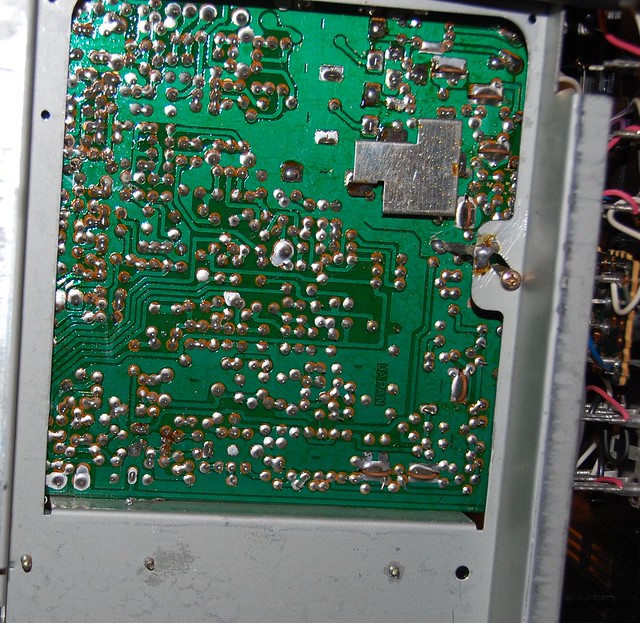
I did the same with the board on the 7025, but intentionally left the tuning wheel in place until everything else was loose. This way I could undo the set screw and hold the wheel while I moved the bad board out and the good one in and slip the large wheel in place without the string falling off. It worked so I tightened that set screw and moved on to reconnecting wires.

Rewrapping the wires was not so easy as I don't have the wire wrap tool. However with the help of some fine tip pliers and mini screwdrivers I was able to get a decent wrap on each one, but I also soldered the joints to be sure. My soldering won't win awards but I think it turned out ok.
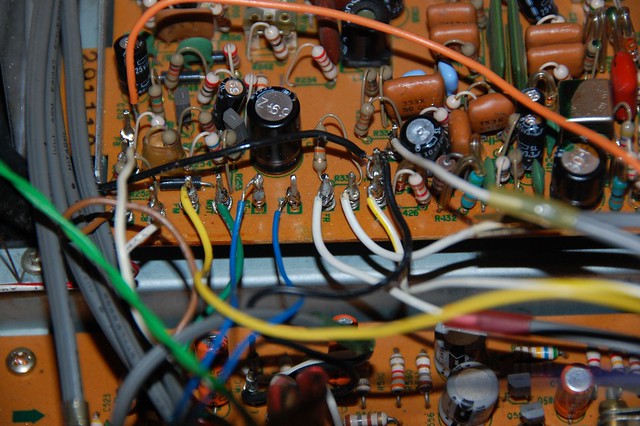
I soon had it plugged back in (before closing up the case) and sparked it up. It worked! Even without an antenna I was picking up FM stations, and all the other functions still seemed fine too. Whew!
I just had to fine tune the set screw on the tuner wheel so the dial mark matched known stations. I also swapped the cases from the 2 receivers as the 7035 one was in slightly better shape. It did have a drivers license # or something scratched in the side but it was subtle and I added a bit of wood filler to hide it more effectively. I had already stolen one knob for the volume control.

So now the STR 7025 is happy, but alas the 7035 is in pieces and singing the blues.
